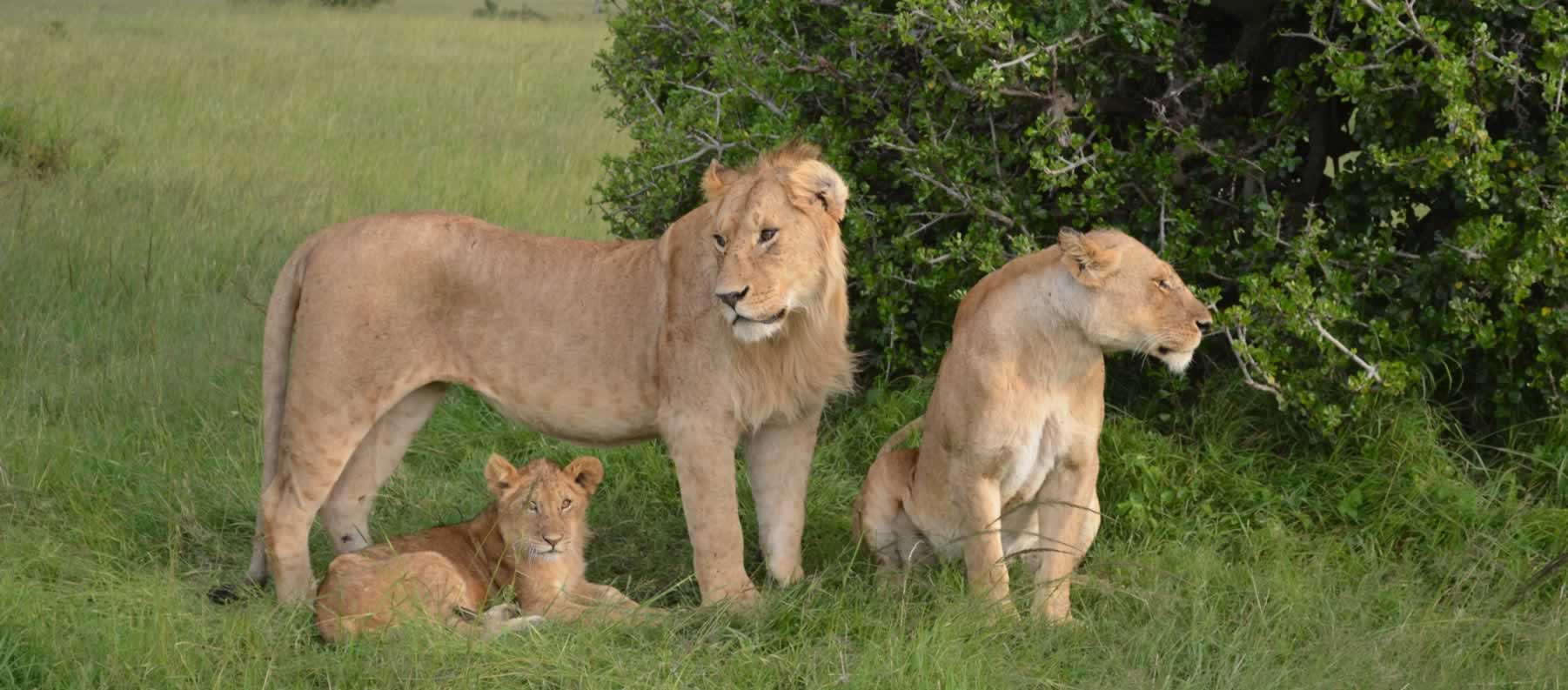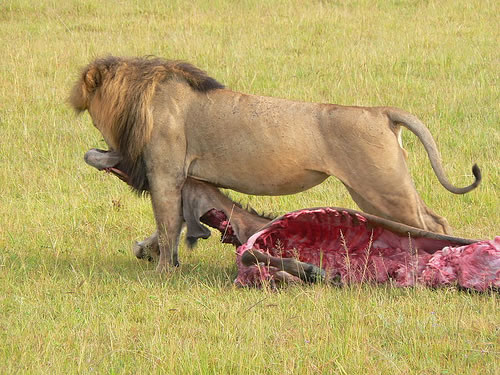Kenya is home to over 2000 lion making it the third largest population in the Africa. The country also boast a healthy over 800 cheetahs and 12000. Leopards good numbers are attributed to the fact that they are able to adopt to different habitat. Were it not for their cagey character you have better opportunity to encounter leopards in most of the safari destination in Kenya. In this guide we shall cover some of the best big cats destinations in the country.
Masai Mara is Kenya top game viewing destination marked with high wildlife concentration. The 1510 square kilometers park is home to over 900 lions ranging the game reserve and nearby conservancies. The famous Musiara pride which has featured in several wildlife documentaries and is one of the most common coalition found in the marshlands at the center of the game reserve. Here you are almost guaranteed of coming into an encounter with a hunting epic in action. In the Mara north conservancies, the seketa and Naboisho prides are the greatest lion prides you may encounter possibly when you are on a guided walking safari. Masai Mara is also a home to an impressive number of leopards which prefer staying in the dense Mara riverine woodlands. Masai Mara is also one of the big four cheetah destinations in East Africa with a good number seen in the southern part of the park.
Tsavo National parks
Tsavo National parks are a single continuous and diverse wilderness going to almost 23,000 square kilometres making it the largest wilderness in Kenya and one of the largest in Africa. The parks are home to about 675 lions the second biggest population in Kenya. Tsavo lions are famous for the legendary man eaters lions, the two lions that terrorized railway workers during the construction of the Ugandan railway in the early 1900s. This led to at least 35 deaths. What set apart Tsavo lions from other in the East Africa region is that their males are maneless akin to the lions in southern Africa. Tsavo is, however not a cheetah destination. Leopards are also occasional and prefers staying in dense woodland.
Amboseli
Amboseli national park is a small park in southern Kenya border near Kilimanjaro. In the 19th century, the park had some of the biggest lion population perhaps only comparable to Masai Mara. However, continued conflicts between the native Masai and the wildlife over grazing land led to massive poaching and drastic dwindling of the numbers of lions in the park. However, with close to 200 lions still living in the park, Amboseli still has one of the biggest population in kenya. The park and the nearby selankay conservancy also boast an impressive cheetah population. Leopards are however hard to come by.
Ol Pejeta
Ol Pejeta is one of the popular Laikipia conservancies famed for its large number of southern black and white rhinos. The conservancy is also home to 6- 7 lion prides with a total population of up to 90 individuals. Some of the lions are fitted with radio collar to make it easier for researchers and travelers to track the pride locations. This make the park the perfect location to follow up hunting scenes in the African savannah. The most remarkable lion pride in the conservancy is the brotherhood pride that dwell in the eastern side of the conservancy. The pride has 24 individual which is larger than most lion prides you will find in various safari destinations. The pride is quite agile in hunting and has the largest number of survivng cubs. Besides the park is a home to approximately 30 cheetahs and 20 leopards which are good numbers for such a small park.
Nairobi National park
The 140 square kilometres park is home to 39 lions which is quite an impressive population for such a small park. Though you may not encounter the big cat as frequent as in Masai Mara, you still have a good chance especially in the dry season. One of the main lion prides in the park could be sighted hunting around the kingfisher picnic site a riverside wildlife rich picnic area inside the park. The park is also home to a small population of cheetah and the more elusive leopards.
Samburu
Samburu game reserves are the most sought after game sanctuaries in northern Kenya. The 3 parks with a combined 535 square kilometres size are home to over 50 lions. The parks are also a dwelling for one of the biggest leopard population with an almost guaranteed encounter in either of the three reserves or Kalama conservancy. Though not very common there are also reported cheetahs in the reserves. Most of the big cats in Samburu are, however, found along river Ewaso ngiro which has a large population of potential prey mostly grazers like gerenuks and buffaloes. The bushy and grasslands along the river also offer the perfect habitat for living and stalking their prey.
Ol Doinyo Lemboro ranch
Ol doinyo Lemboro ranch is a small family owned stretch of wilderness in Laikipia in Kenya. The ranch has a forested riverine stretch for the Ewaso narok river which flows on its northern border and a habitat to one of the world biggest leopard population. Lions can also be occasionally spotted in the ranch. The ranch is one of locations where you there have been incidences of spotting the black leopard, ‘black panthers’ in the past. Importantly, black panthers are not a subspecies but have a change of skin colour due to the changes in their pigmentation. One such leopard is said to be staying in a rock near Laikipia wilderness camp situated inside the ranch.
Meru national park
Meru national park was the home of the legendary Elsa the lioness that featured in the book born free. In the 20th century the park boasted abundant wildlife including lions and other big cats. However, the park was overrun by poachers in the 1970s almost wiping out the big cats and other major game like elephants and rhinos. However, in the early 2000s effort were made to start rehabilitating the lions back into the park which has been quite a successful process leading to an impressive population of about 80 lions today. There are also an impressive population of leopards dwelling in the riverine woodlands on the Tana river in the northern border of the park.
Lake Nakuru
Lake Nakuru is a small lake park in the central rift valley. The park is famous for its large concentrates of flamingo and for being a sanctuary for over 100 black rhinos. Though the park was one of the most affected destination in the big cats decline in the late 20th century, concerted efforts by conservationists is leading to a steady rise in their numbers within the park. Today Lake Nakuru is home to a fairly impressive population of lions estimated to about 65 lions. The park is also one of the best habitats for leopards and you have better chances of encountering them hanging on the yellow backed fever trees dotted in various parts of the park.
Lewa
Lewa is one of the Laikipia conservancy famed for its big rhino population. The park also play a big role in the conservation of the big cats especially lions. There are approximately 44 lions in lewa today. An impressive number of the lions has been collared to monitor their movement, learn about their migration patterns and study their dietary process. This is also aimed at reducing the occasional human and wildlife conflict that has promoted illegal hunting activities. Besides the lions, lewa is also home to an impressive cheetahs population. Though quite a rare sighting, Lewa is home to some leopards.



